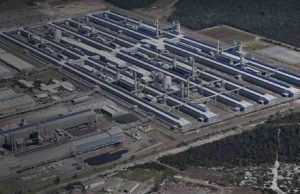Australian companies get a lot of kudos for developing technologies in the clean energy, but what is rarely recognised is its expertise in carbon trading and carbon management – courtesy of nearly a decade of state-based schemes and the laboured build-up to the setting of a national carbon price.
In the international world of carbon markets, Australian are everywhere. And it now seems that they are making their presence felt in the carbon accounting, measurement and management areas too, with one of the leading local companies, CarbonSystems, landing a significant contract with compute and software giant Microsoft.
CarbonSystems has won an international tender, beating 34 software rivals, to provide its proprietary software to manage the energy, emissions and environmental performance and reporting across Microsoft’s global operations, comprising more than 600 facilities in more than 110 countries.
This is not their biggest contract in terms of size – they already serve one of the big 4 banks and same big European manufacturers – but it could be one of the most significant. “They are a very tech-savvy customer,” CarbonSystems CEO David Solsky told RenewEconomy. “The fact that they went to marker, and chose us is a defining moment. Hopefully it can give some fantastic fuel for more contracts outside of Australia.”
The Sydney-based CarbonSystems entered the sustainability software market three years ago, and provides a cloud-based environmental and energy management software to more than 120 clients around the globe. Solsky says he believes CarbonSystems won the contract because of its ability to use cloud computing to simplify and streamline Microsoft’s global greenhouse gas management.
Although Microsoft is based in the US, which does not have a national emissions trading scheme or carbon price, its subsidiaries operate in countries that do. And many global corporations – based in the US, Europe or Asia – are keeping tabs on emissions as part of their sustainability reporting, or because they are modeling an internal carbon price to prepare for the time when a carbon price is introduced in their home country.
“Microsoft is committed to measuring, transparently reporting, and minimizing the carbon footprint of our operations,” Rob Bernard, chief environmental strategist at Microsoft, said in a statement. “Carbon System’s ESP will enable us to efficiently collect, analyze and share environmental data, delivering new levels of understanding about the resources we use.” Microsoft’s operations include infrastructure – such as data centres and corporate real estate – which can have significant energy and emissions challenges and opportunities.
Solsky says Australia is one of the principal centres of emissions and energy management, thanks to the development of state-based schemes and the National Greenhouse and Energy Reporting Act (NGERS)
“It’s not easy to take an Australian technology company forward globally,” Solsky says. “But the hottest market in the world at the moment in Australia. NGES has been chugging along and the introduction of the carbon price as put a rocket under it. We were able to show that we had the technology, and had also deployed it in a real world environment”
Solsky says Australia will likely remain a focal point in the next year or two, but the introduction of a carbon tax in South Africa, as well as a growing emphasis on energy efficiency in the US and in Asia should create numerous opportunities.
And he says that in Australia, it’s not just about NGERS, and the top 500 emitters, but local and state governments, as well as service providers who do not necessarily have high emissions, but want to manage their output for the sake of transparency and branding.
There are probably 2,500 to 3,000 organisations who need to manage this data in a more robust and enterpise-wide manner,” Solsky says, adding that due to its complexity, it is not something that should be managed on spread sheets. “You are seeing larger emitters move from spreadsheets to platforms like ours. They are going to have to get this right.”








